|
A.K.Saxena has been working in the field of Photonics Instrumentation and
Optical Technology for the past 35 years. He obtained his M.Sc and Ph.D. degree
in Physics from Lucknow University, India in 1968 and 1977 respectively. Early
part of his research activities has been mainly directed towards developing some
new polarization techniques for the study of refractive index fields. These
techniques were found quite useful in the study of flames and in the study of
concentration dependent diffusion in reactive and non-reactive liquid-liquid
system. Also these techniques have potential application in wind tunnel studies.
|
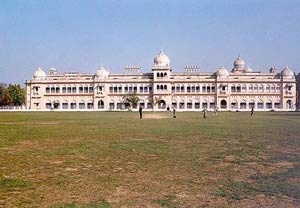 Lucknow University
Lucknow University |
During the years 1974 to 1977 he had been working on instrumentation for
high-resolution spectroscopic observation of sun and stars. He has successfully
performed experiments on high resolution spectroscopic studies of solar corona
using multislit spectrograph and experiments on coronal oscillations using multi
channel photometer and CCD imaging during four solar eclipses of the last
century, two on the Indian soil and one in Venezuela and last in Iran.
|
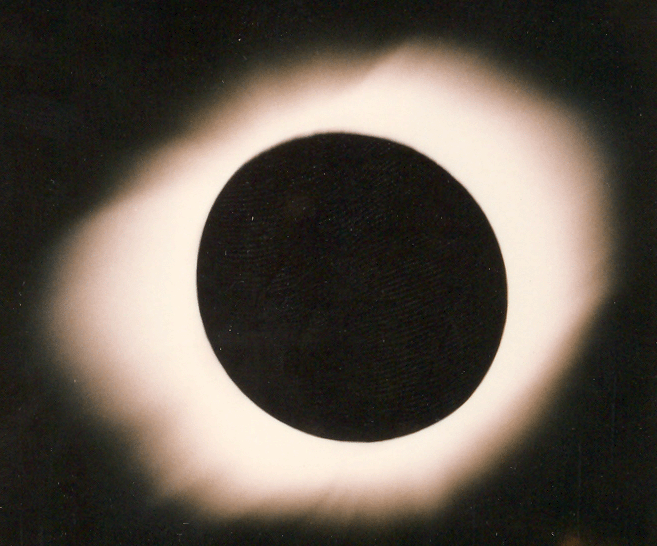 Solar
Solar |
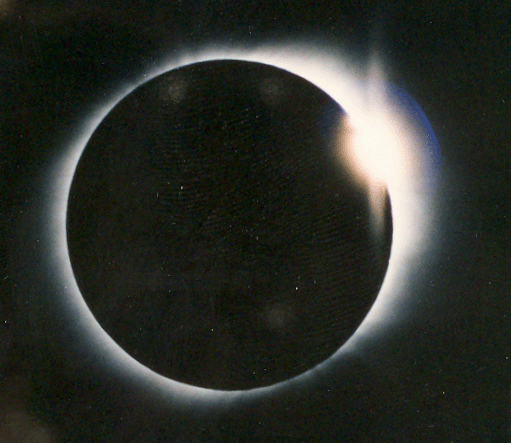 Eclipse
Eclipse |
Since 1977, he has been involved in optical technology development and
Instrumentation programs including design, fabrication and testing of optics
used in Astronomical observations and related applications. He has developed a
new polarization interferometer technique using a simple device (Babinet
Compensator) for the precise quantitative evaluation of optical surfaces and
wavefront sensing in situation like active and adaptive optics systems.
|
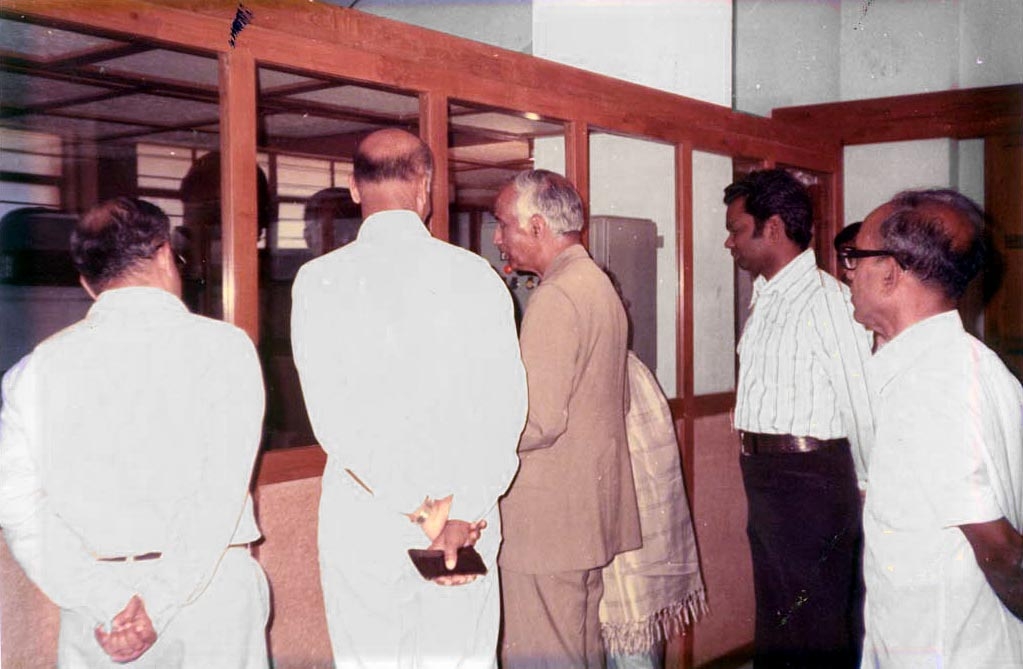 Nobel Laureate
Chandrashekar having a glimpse of the 2.34M mirror polishing along
with Prof.M.K.V.Bappu
Nobel Laureate
Chandrashekar having a glimpse of the 2.34M mirror polishing along
with Prof.M.K.V.Bappu |
 The 2.34M mirror
is ready for aluminizing in the 2.8M vacuum coating plant at
Kavalur.
The 2.34M mirror
is ready for aluminizing in the 2.8M vacuum coating plant at
Kavalur. |
|
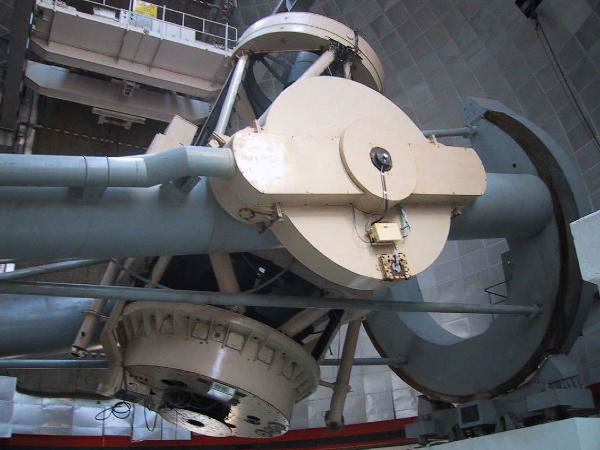 2.34 M Telescope
2.34 M Telescope |
|
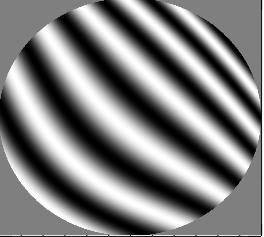 Interferometric record for
Interferometric record for |
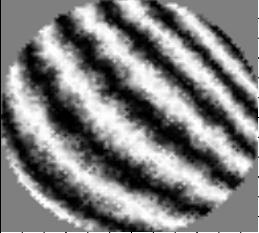 Wavefront Sensing
Method
Wavefront Sensing
Method |
He has set up Vacuum coating facilities at
Indian Institute of Astrophysics. Setting up of 0.3M, 1.5M, 2.8M and recently
the 2M Vacuum coating plant at Hanle are his important contributions.
Subsequent aluminizing of large mirrors up to 2.34M and various other types of
optical coatings has been part of his responsibility. The 2M coating plant is
operational since Aug.2004.
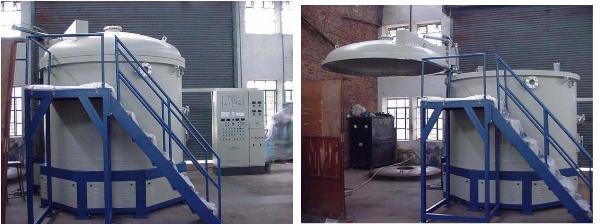 Vacuum
chamber fully assembled
Hydraulic lifting arrangement for the top lid
Vacuum
chamber fully assembled
Hydraulic lifting arrangement for the top lid
|
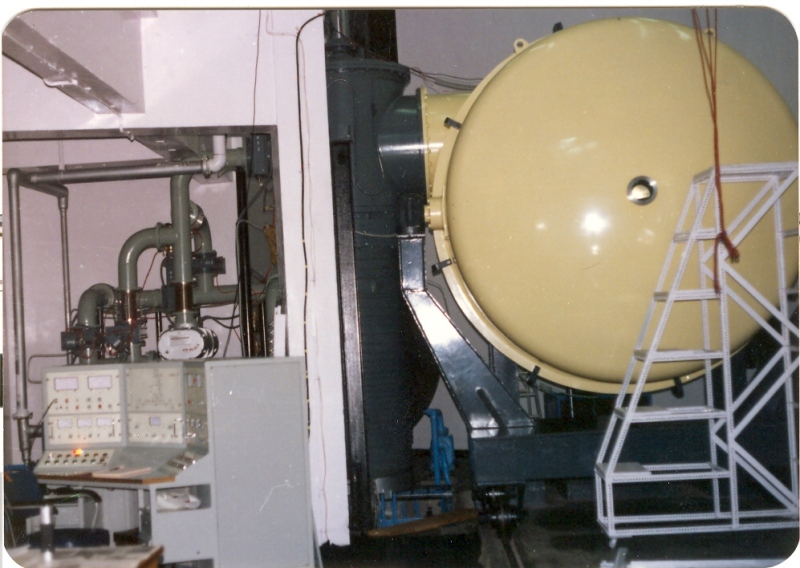 2.8 Vacuum Coating Plant
2.8 Vacuum Coating Plant |
 1.6 Vacuum Coating Plant
1.6 Vacuum Coating Plant |
 Gold
Coating Attachment
Gold
Coating Attachment |
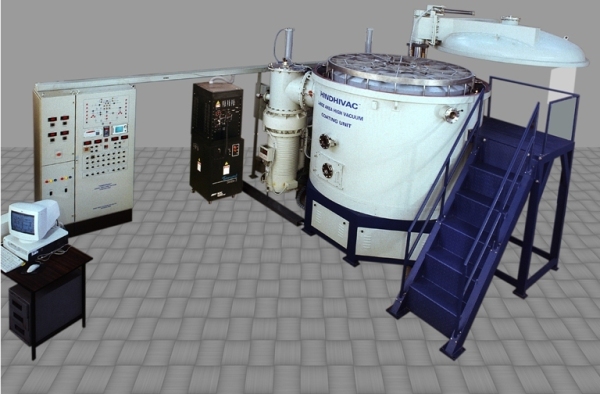 2M Vacuum Coating Plant at Hanle
2M Vacuum Coating Plant at Hanle |
He has developed the technology for the fabrication of passive radiant cooler
sun shield panels of highly specularly reflective surfaces for VHRR in INSAT
Series of satellite. The passive radiant cooler houses IR detector and IR
Channel's optical elements. The cooler maintains a temperature 105 degree K
utilizing deep space as the heat sink. It is an import substitute resulting in large savings in
foreign exchange. Successful performance of VHRR in INSAT 2A, 2B, 3A and METSAT
speaks of the quality and performance of the radiant cooler. Presently engaged
in the development of sunshield panels for INSAT – 3D
imager and sounder
coolers and W2M is the very recent one.
|
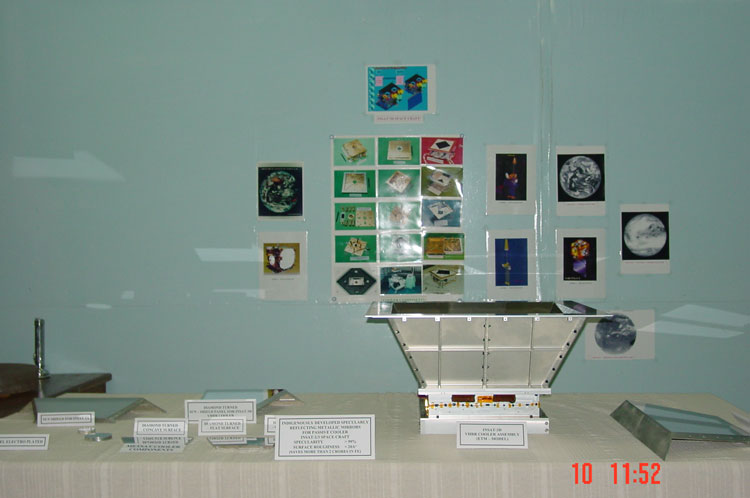 VHRR Sunshield Panels
VHRR Sunshield Panels |
He Shares the 1994 Republic Day Award of the National Research Development
Corporation for the innovative invention work related to the passive radiant
cooler used in VHRR of INSAT II series of satellites. Other members are from
ISRO & NAL.
He has been part of Ultra Violet Imaging Telescope (UVIT) – ASTROSAT (Indian
Astronomy Satellite to be launched in 2008) team. Optical system design and
realization of the optics is his responsibility. The optical configuration and
design details have already been completed.
Developed the technology and fabrication of optics for the Synchrotron
Radiation Beam Lines (61A, 450 Mev) and monochromators. These beam lines are to
be used for photoemission spectroscopy and soft x-ray spectroscopy and beam line
metrology. A machine for grinding and polishing of spheroidal mirrors has been
specially designed and fabricated. A pair of 500mm x 50mm flat mirror and 300mm
x 50mm spheroidal mirror has been fabricated and delivered to BARC. Also, a
setup for Chromium and Gold thin film coating on the above mirrors has been
built and perfected for use.
Recently he has developed and built a Long Trace Profilometer (LTP) for measuring the
slope errors /surface profile of long grazing incidence optics based on
polarization shearing interferometer. The accuracy and sensitivity of this
instrument matches with the best elsewhere in the world. It is in continuous use
for testing Synchrotron Beam Line Optics for the past two years. Work on Second
project to build an advanced version of the Long Trace Profilometer (LTP Version
II) was completed in 2006. Building of such sophisticated Long Trace Profilometer (LTP)
instrument by him has put INDIA in the world map of LTP builders.
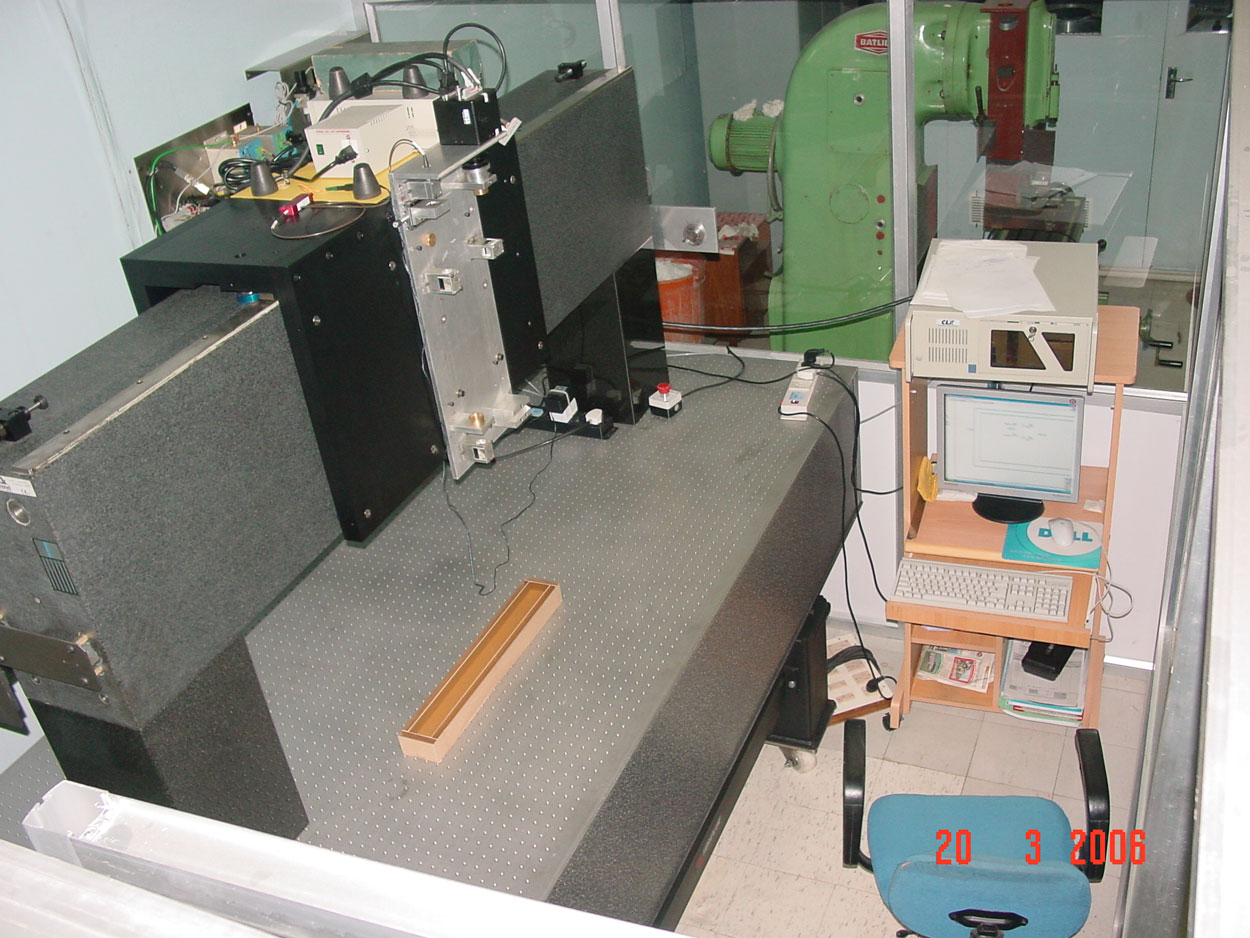 Long Trace Profilometer
Version
II
Long Trace Profilometer
Version
II |
He is spearheading a group on Adaptive Optics in the institute. Research is
directed towards building a low cost adaptive optics system for astronomical
applications. Using a Shack Hartmann sensor and CMOS detector, a laboratory
model has been demonstrated. Efforts are on to reduce the closed loop timing to
within 20 millisecs. A novel wavefront
sensing method using polarization shearing interferometric technique was established
by him. This is a important requirement for adaptive optics correction system. Two students have been awarded for the Ph.D degree on these works in the year 2007 and 2009 respectively..
 Laboratory
Setup for Wavefront Sensing Using Polarizing Shearing Interferometer
Laboratory
Setup for Wavefront Sensing Using Polarizing Shearing Interferometer |
Development of thin film technology for astronomical purposes is the thrust
area of the present activity.
A new computer controlled multi-functional 0.3M coating plant has been recently
acquired and is being used for research purposes. The present activity includes
development of thin films for infra-red photo-detector, photo-voltaics and
filters for astronomical purposes. The thin film characterization facilities
such as Scanning Electron Microscope and Electron Density Spectrometer are being
added for research activity.
|
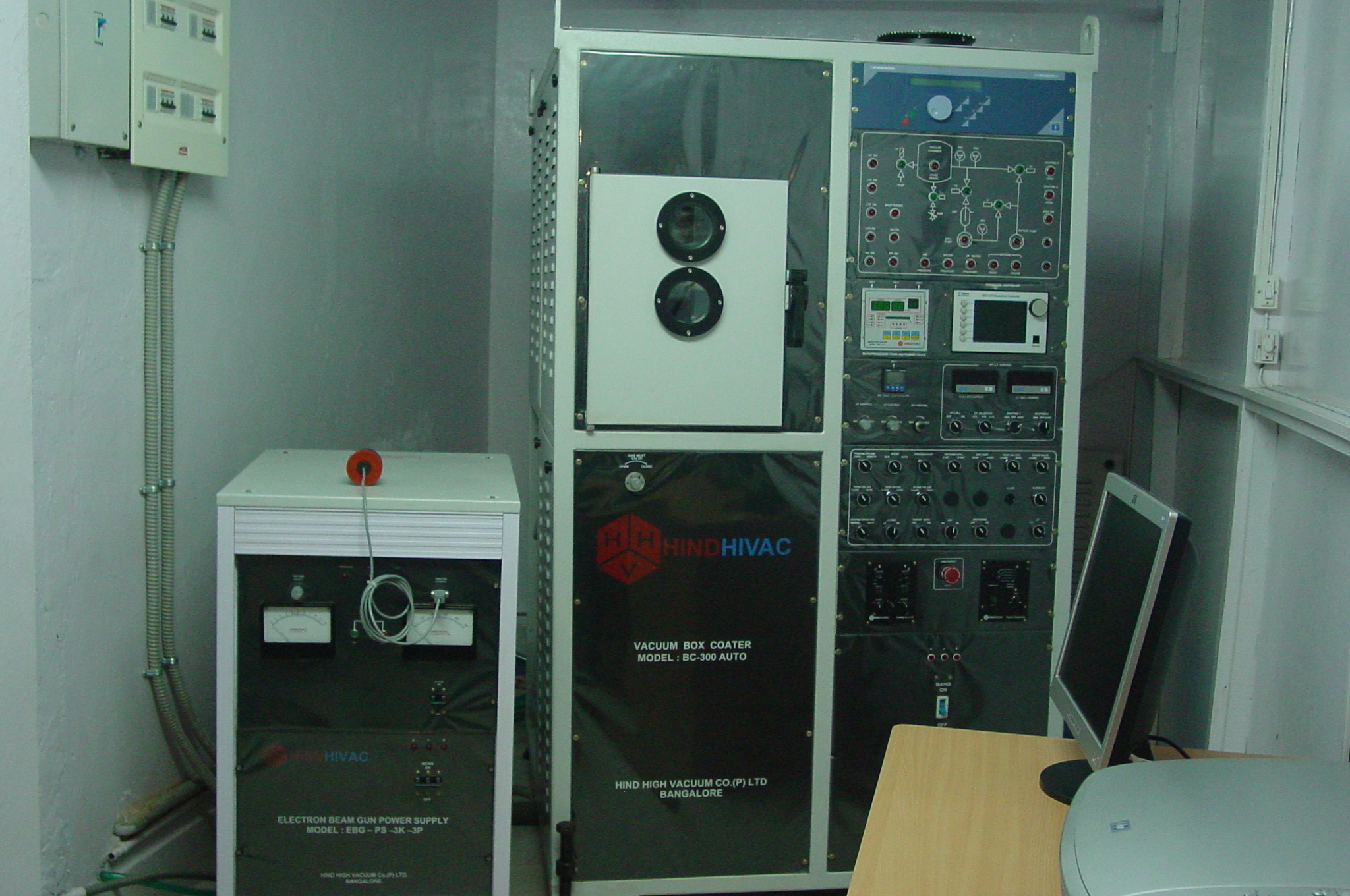 0.3M Computer controlled vacuum coating plant at Bangalore campus
0.3M Computer controlled vacuum coating plant at Bangalore campus |
During his sabbatical leave from July to December 2003, he worked with
Dr.Kenneth Lanzetta of SUNY – Stony Brook,USA and Project Scientist Dr.Paul Hickson,UBC,Canada
as Optical Designer for the Large Aperture Mirror Array (LAMA) project.
Different optical configurations for LAMA prototype telescope were worked out.
Work carried out UBC, Vancouver, Canada:
The LAMA telescope employs an array of fixed 8-meter liquid-mirror telescopes.
These are located in a closely-packed configuration with an overall diameter of
54 meters. Approximately 62% of the light that falls within this area is
collected and focused on a common detector. This gives the array a
light-collecting power equivalent to that of a 42-metre telescope. As LAMA is a
zenith pointing telescope, tracking secondary mirrors and active optics allows
the array to follow objects for several minutes as they pass overhead. At any
given time, the array can point anywhere within a 4-degree diameter circle
centered on the zenith. This makes 2400 square degrees, about 6%
of the entire sky, accessible to the telescope. Light
from all the telescopes is brought to a common focus in a central beam-combining
room. Here the light beams interfere constructively to produce an image with a
resolution of several milliarcsec. Moving mirrors, controlled by a
phase-tracking system, equalize the optical path lengths from all elements of
the array to within a fraction of a micron.
Optical design for the above configuration of LAMA was carried out. It involved
phase tracking system, path equalization and beam combination. A totally new
concept has been finalized.
Following
is the list of important world class instruments and projects to his credit.
Some of the typical ones are: |